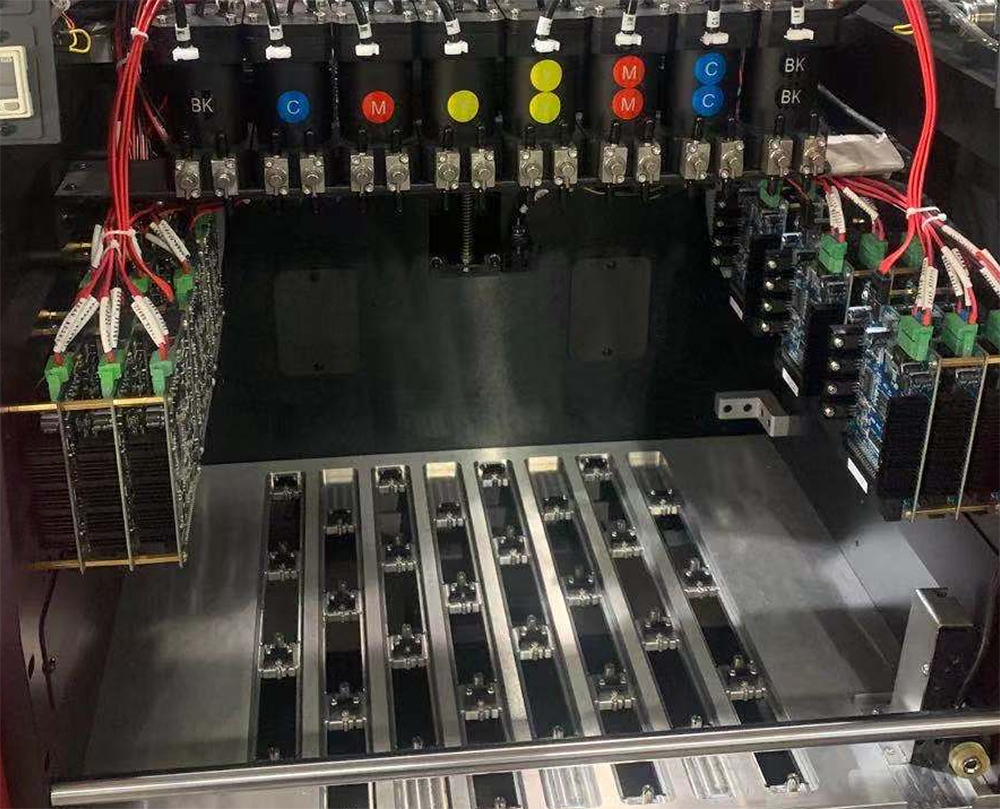Technical Challenges in Printing Large Formats with a UV Flatbed Printer
Technical Challenges in Printing Large Formats with a UV Flatbed Printer
Introduction
UV flatbed printers have revolutionized the printing industry, particularly in their ability to print on various materials and surfaces with exceptional quality. These printers use ultraviolet (UV) light to cure or dry ink immediately after it is applied, allowing for quick and efficient printing on a wide range of substrates. However, printing large formats with a UV flatbed printer presents unique technical challenges that must be addressed to ensure optimal print quality and productivity. This article explores the key technical challenges encountered when printing large formats using UV flatbed printers and discusses potential solutions to overcome these obstacles.

Ink Adhesion and Curing
One of the primary challenges in printing large formats with a UV flatbed printer is ensuring proper ink adhesion and curing. UV inks are designed to cure rapidly when exposed to UV light, but achieving consistent and thorough curing across a large print area can be difficult. Inadequate curing can lead to poor ink adhesion, which may result in smudging, scratching, or even complete ink failure.
Solution: To address this challenge, printer operators must carefully adjust the intensity and duration of UV light exposure based on the specific ink and substrate being used. Additionally, using inks specifically formulated for large format printing can improve adhesion and curing performance. Pre-treatment of the substrate with adhesion promoters may also be necessary to enhance ink bonding.
Maintaining Color Consistency
Maintaining consistent color across a large print area is another significant challenge. Variations in ink deposition, substrate absorption, and UV light exposure can all contribute to color inconsistencies, resulting in a visibly uneven print.
Solution: Regular calibration of the printer and its components, such as the UV lamps, is crucial to maintaining color consistency. Implementing color management systems that monitor and adjust ink output can also help minimize color variations. Additionally, using high-quality inks with stable color properties can reduce the likelihood of color shifting during the printing process.
Print Speed and Efficiency
Printing large formats demands high print speeds and efficiency to maintain productivity and cost-effectiveness. However, achieving fast print speeds without compromising quality can be challenging, especially when working with UV inks that require precise curing.
Solution: Investing in advanced UV flatbed printers equipped with high-powered UV lamps and optimized ink delivery systems can significantly improve print speed and efficiency. Furthermore, implementing efficient workflow practices, such as automated material handling and job queuing, can help maximize productivity.
Ink Coverage and Build-Up
Large format prints often require thicker ink coverage or multiple layers of ink to achieve the desired visual effect. However, excessive ink build-up can lead to curing issues, such as ink cracking or peeling, and can also impact the printer’s ability to maintain resolution and detail.
Solution: Printer operators must carefully manage ink coverage and layering to avoid these issues. Using inks with good flow and leveling properties can help ensure even ink distribution and prevent excessive build-up. Additionally, adjusting the printer’s settings to optimize ink deposition and curing can help maintain print quality while achieving the desired ink coverage.
Substrate Compatibility and Preparation
UV flatbed printers can print on a wide range of substrates, but each material has unique properties that can affect print quality. Large format prints often involve unconventional or custom substrates, which can present additional challenges in terms of compatibility and preparation.
Solution: Thorough testing of the substrate with the intended ink and printer settings is essential to ensure compatibility and optimal print quality. Substrate preparation, such as cleaning, priming, or applying adhesion promoters, may be necessary to achieve the desired print results. Additionally, working with experienced printer operators and material suppliers can help identify potential compatibility issues and develop effective solutions.
Printer Maintenance and Durability
The high demands of large format printing can take a toll on the printer’s components, particularly the UV lamps and ink delivery systems. Regular maintenance is essential to ensure the printer remains in optimal condition and can consistently produce high-quality prints.
Solution: Establishing a regular maintenance schedule and adhering to the manufacturer’s recommended service intervals can help prolong the printer’s lifespan and maintain print quality. Regularly cleaning the printer’s components, such as the print bed and inkjets, can also help prevent issues related to ink build-up and curing.
Environmental Considerations
UV flatbed printers, especially those used for large format printing, consume significant amounts of energy and generate heat during operation. This can impact the printer’s performance and also raise concerns about energy efficiency and environmental sustainability.
Solution: Investing in energy-efficient UV flatbed printers and implementing energy-saving practices, such as using power-saving modes during periods of inactivity, can help reduce energy consumption. Additionally, exploring alternative UV light sources, such as LED-based curing systems, can offer improved energy efficiency and reduced environmental impact.
Conclusion
Printing large formats with a UV flatbed printer presents a unique set of technical challenges that must be addressed to ensure optimal print quality and productivity. By carefully managing ink adhesion and curing, maintaining color consistency, optimizing print speed and efficiency, managing ink coverage and build-up, ensuring substrate compatibility and preparation, maintaining the printer, and considering environmental factors, printer operators can overcome these challenges and produce high-quality large format prints. As the technology continues to evolve, it is essential for printer operators and manufacturers to remain vigilant in addressing these challenges and exploring new solutions to further enhance the capabilities of UV flatbed printers for large format printing.
